 Rundlet-May House
Rundlet-May House
Hoyt Plan, 1853
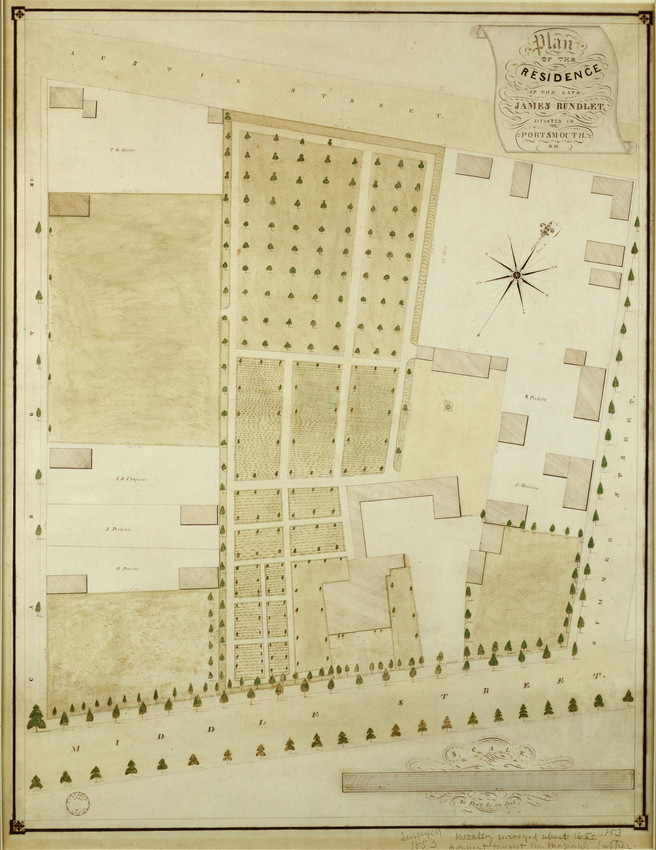
When the house was finished in 1807, the final purchases made noted in the account book were (between 1807-1809) pear trees, poplars, peach trees, $20.40 worth of grapevines and rose bushes from Samuel Larkin who also lived on Middle Street, and many trees including $7.16 of “fruit trees” in May 1809. The geometric plan of grid-like paths in the garden had been completed. By the turn of the twentieth century, trolley tracks lined the street out front, and the open fields facing Rundlet-May House were sold, and new houses were soon being built. In the back of the property, a Roman Catholic church could be seen on Austin Street, and a busy neighborhood was being developed around the Rundlets’ property.
Sources of Influence on the Landscape
Little is known about what gardening books, if any, the Rundlets owned when building the house, but in 1806 American Gardener’s Calendar was published by Bernard McMahon and was influential to many who were building gardens on a grand scale for their estates. There were many precedents before that which may have influenced the geometric plan, though there is no clear link to any specific landscape design that would have served as a primary influence.
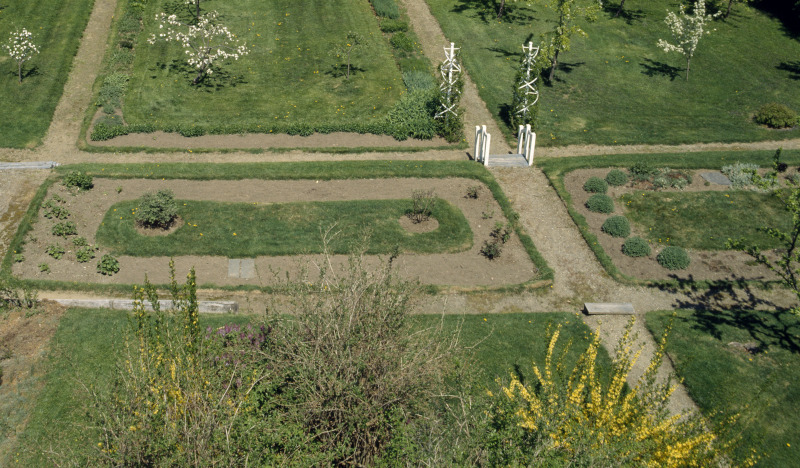
The terraced garden at Rundlet-May House was designed with regimented walkways and a prevailing grid plan punctuated with fruit trees, flower beds, and open space. Many French garden designs feature similarly regimented pathways, axials, and clearly delineated planted sections with the house as a central focus, as do some English gardens of the seventeenth and eighteenth century, and those dating from the Medieval period in Europe. Strong axials were also often prominent in Islamic and Mughal garden design and complemented by complex water features.
Like so many gardens of the eighteenth and nineteenth century in America, the Rundlet’s garden was full of scents and plant varieties that could be used to ward of unwanted odors of everyday life, as well as fruit to be canned, preserved, and used for cooking in a number of ways. Nothing was considered as wasted or unwanted material in the garden of that time period; everything had a purpose and the practical mixed with the pleasure garden at once.
Pet Cemetery
James Rundlet-May was a medical doctor with a strong interest in animals and their well-being. He was one of the co-founders of the New Hampshire Society for the Prevention of Cruelty to Animals and he and Mary Morison May gave a home to many animals while they lived at Rundlet-May House. In late nineteenth-century America, pet cemeteries were becoming more fashionable. In a corner of the terraced garden, they buried beloved Flora. As the family story told, Flora was called the “Confederate Dog” by the neighbors, since she was rescued from an abandoned property in the South during the Civil War. Her tombstone was the first of ten that commemorated the lives of Rundlet-May pets. The last pet to find its eternal home in the cemetery is Sunny Boy, a lone canary among the dogs, and one that son Ralph May remembered as being a favorite of Mary Morison May.

Historic photograph of the cemetery.

The 1788 by-laws of the New Hampshire Society for the Prevention of Cruelty to Animals.
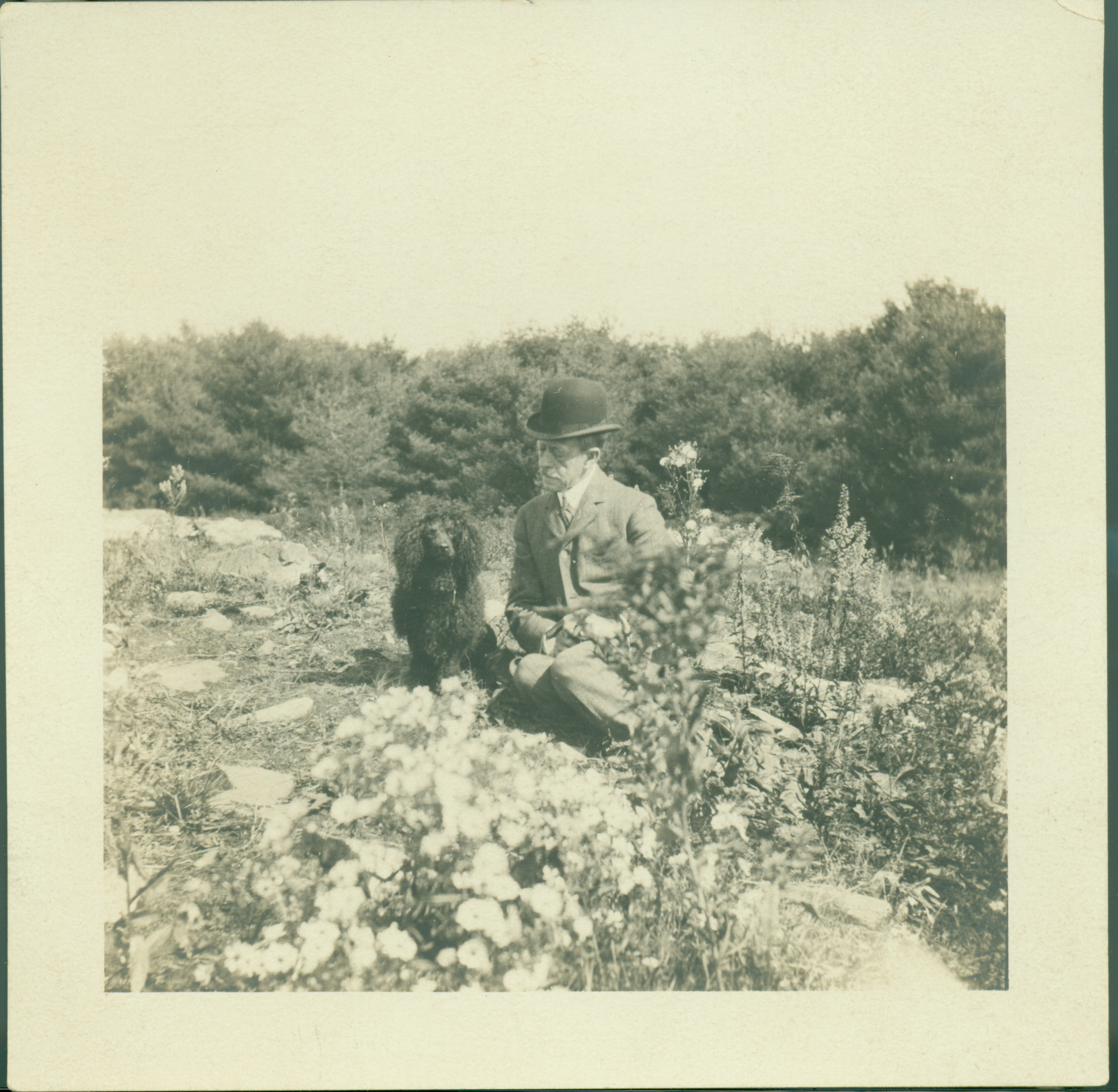
This image is thought to be of Ralph May and Pepin, who appears to be a type of poodle.
to learn more
Outside In
A Garden for Purpose and Pleasure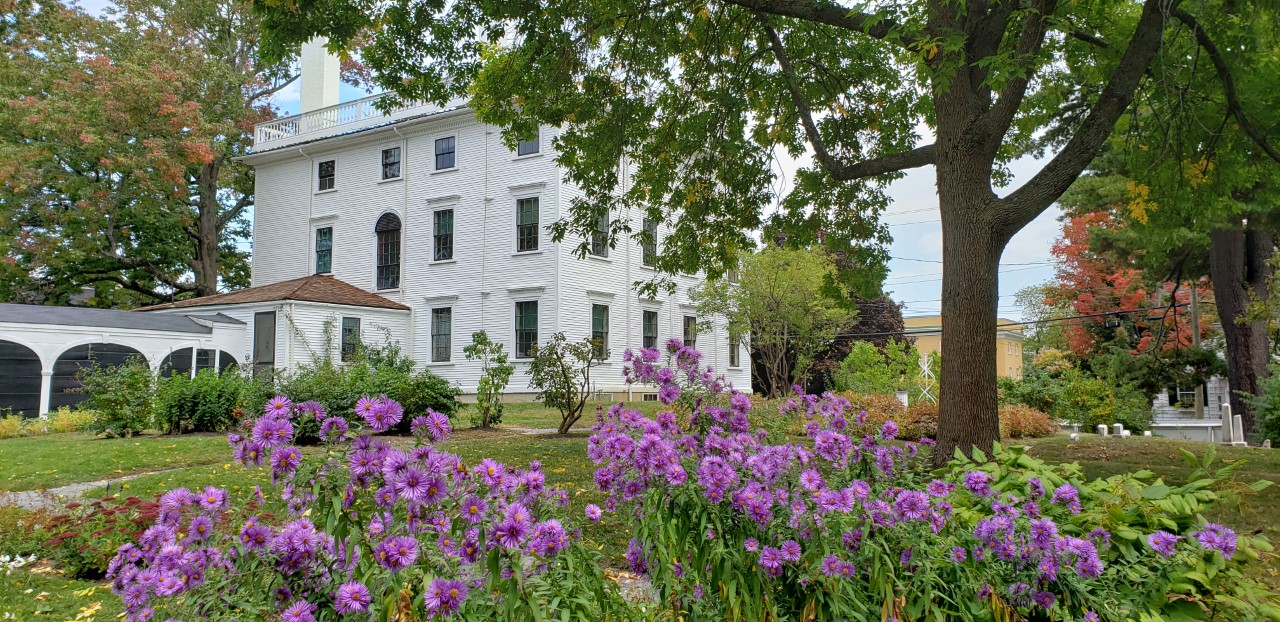
The gardens that the Rundlets planted, while changing in essence little over time, provided the family that lived in the house endless enjoyment over the years. Today, visitors to this Historic New England jewel in downtown Portsmouth will also find respite and beauty. Historic photographs from the archives and those taken more recently, offer information about plantings, landscape projects, and invaluable insight to what it was like to have and care for a garden and orchard of this scale over time.
Carriage Barn
Practicality Versus Aesthetics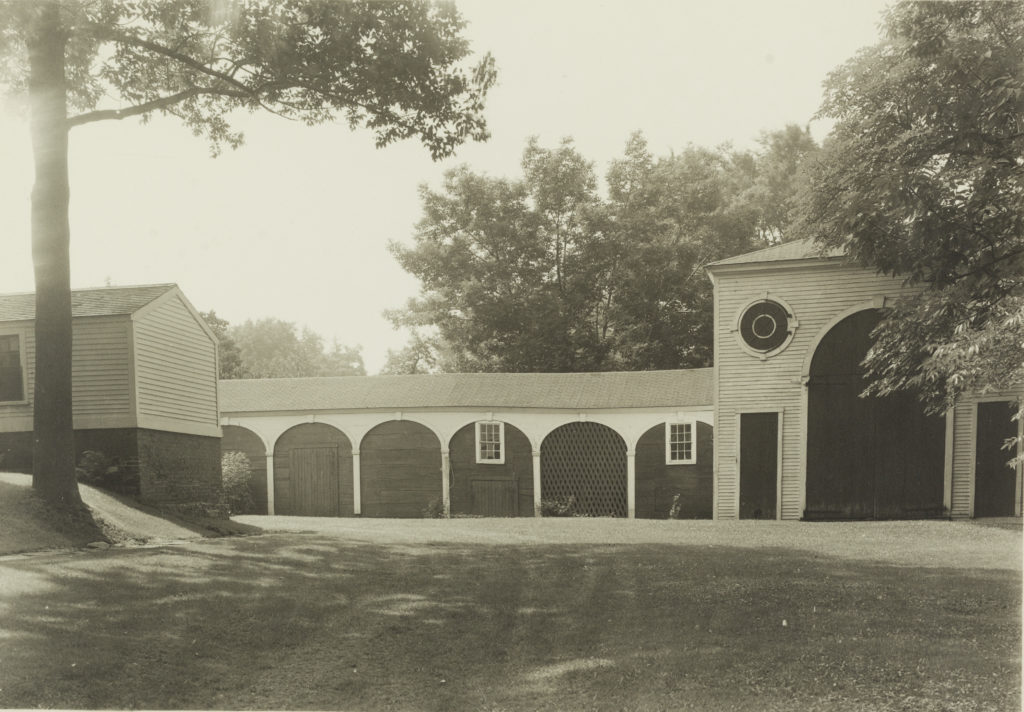
The carriage barn and stables are located at the end of a series of interconnecting outbuildings projecting from the rear of the house. These outbuildings, containing a tack room, pig sty, and potting shed, are original to the house and not the result of a pieced-together structure added over time. Neoclassical style trompe l’oeil arches complement the symmetrical and elegant architecture of the house and provide an aesthetic barrier to the service yard located behind the carriage barn. By family tradition, this area was referred to as the “cow yard,” and city tax records reveal that between 1825 and 1850, the Rundlets owned as many as four cows and four oxen.
Some of the most necessary tasks of nineteenth-century food preparation were also relegated to this area such as the occasional butchering of an animal. Its proximity to the scullery meant that animals could be “prepared” outside and brought into the scullery for further work before being cooked. Also to be noted was that it is also likely that manure was stockpiled nearby; a mixture of life tasks, sights, and smells, that all were a part of running the house.
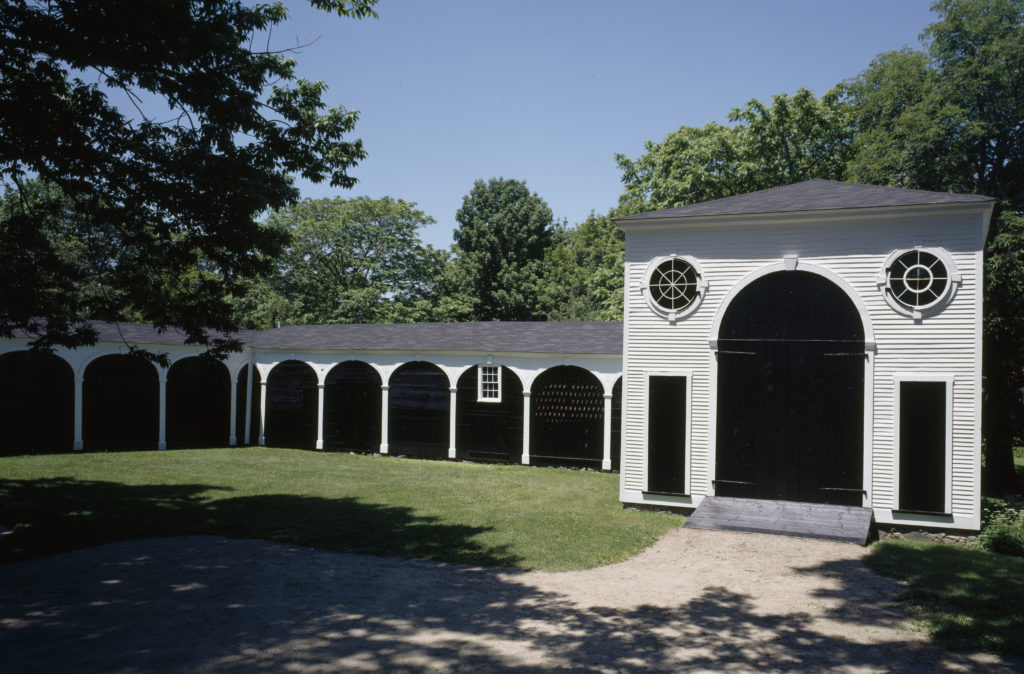
Privies, Roses, and Indoor Convenience
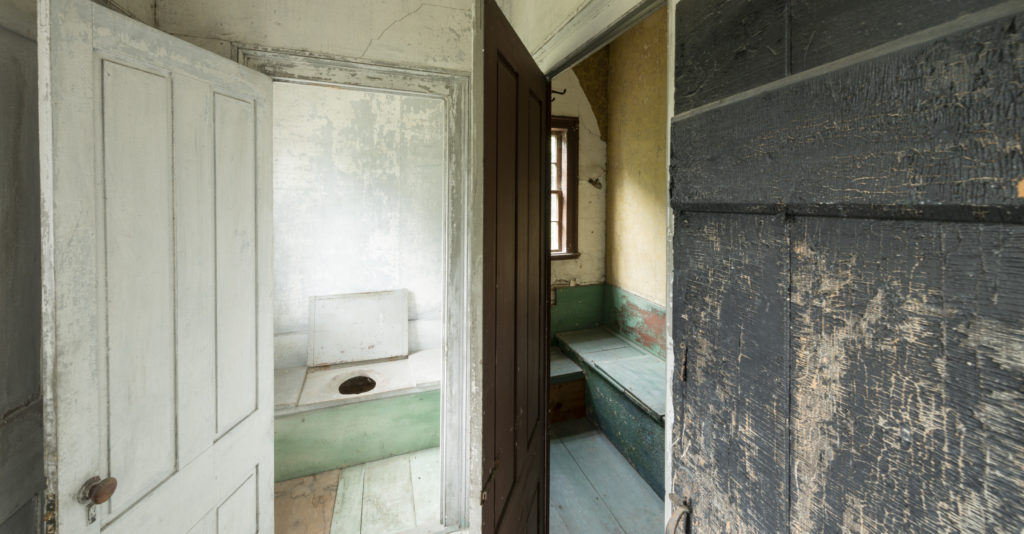
Exiting the scullery through a door and walking down a short flight of steps, luxuriously covered from any outdoor rain or wind by a roof, any member of the Rundlet household could enter a door off the scullery and walk a few more steps down a storage hallway in the connecting carriage barn. At the end of the hallway are wall-papered privies in the attached ell. The largest of the six is in a single closet assuring the user of maximum privacy. The others vary in size accommodating the large household which included the Rundlets, their children, and their staff. Two to three times a year, a “night soil man” arrived with a “rude cart,” accessed the pit below the privies through an outside door and removed and carted away the waste.
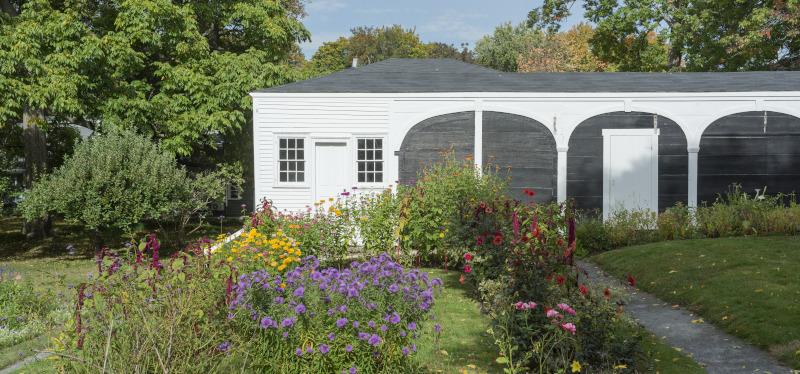
Getting to the Outbuildings
No Need to Go OutsideJust Steps Away
In this exterior view you can see the covered passages that lead to the privy and the barn, allowing access without ever stepping outside. Click the hot spots to see interior views.
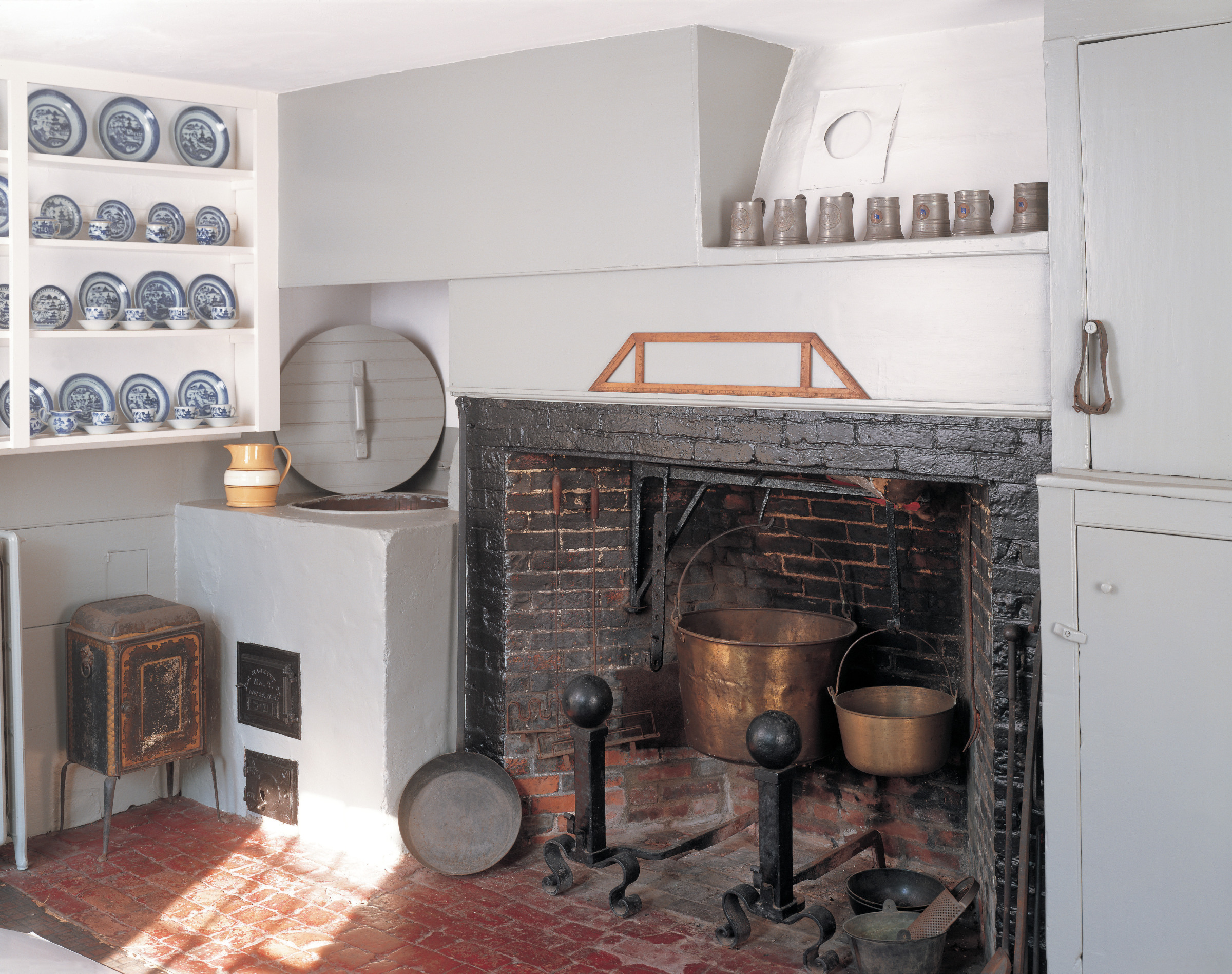
Back Kitchen
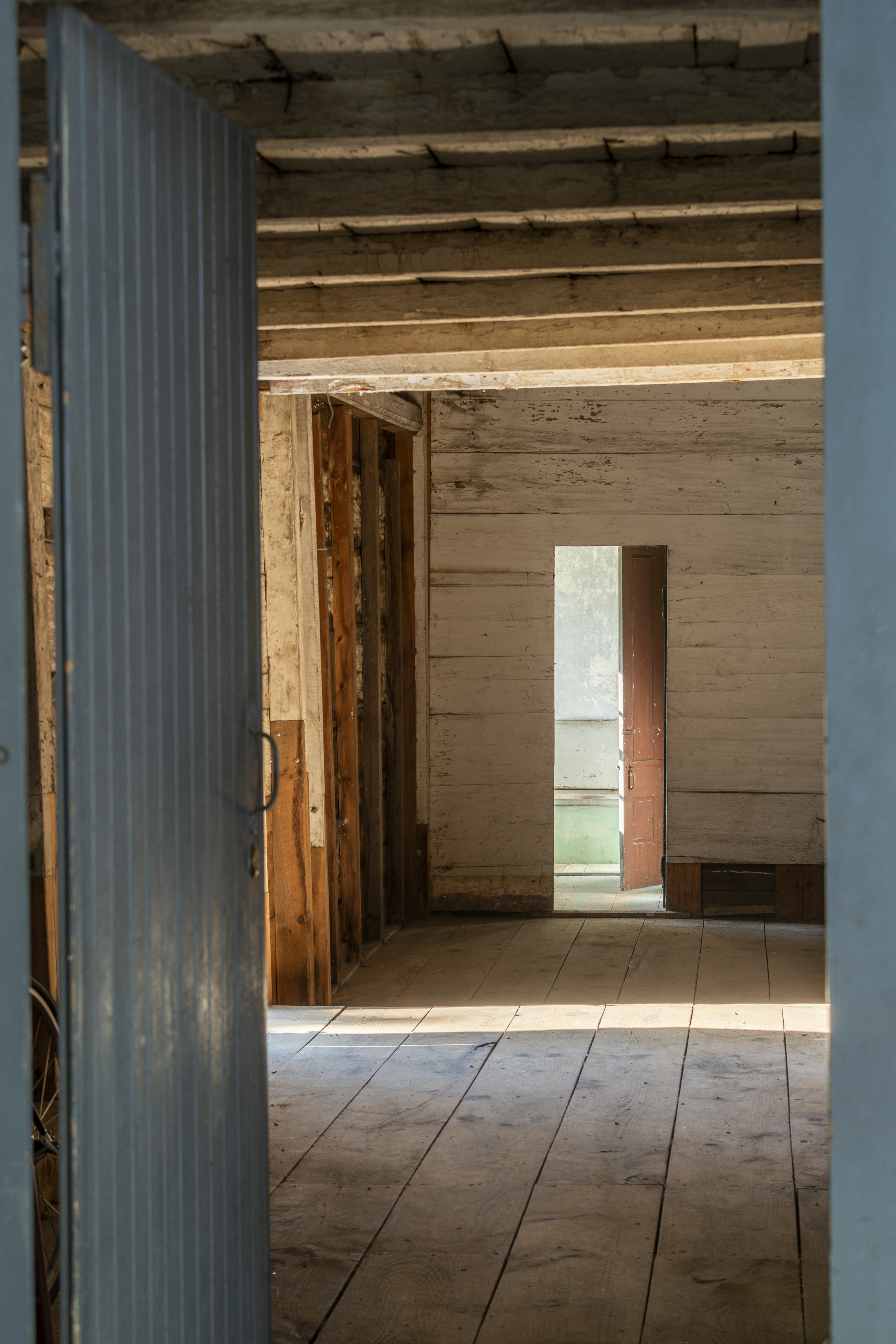
Back door off the kitchen opens to corridor.
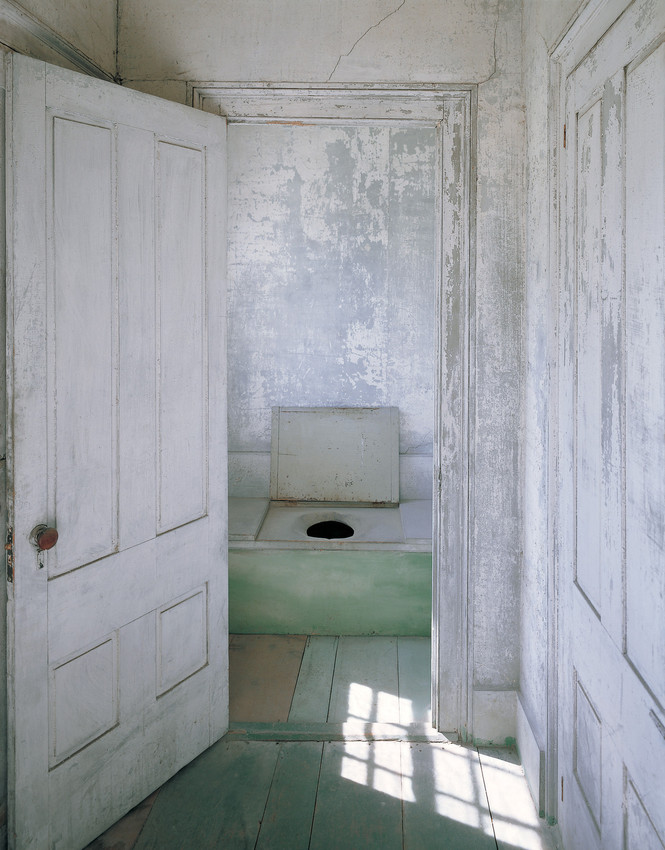
Privies located in this corner section.
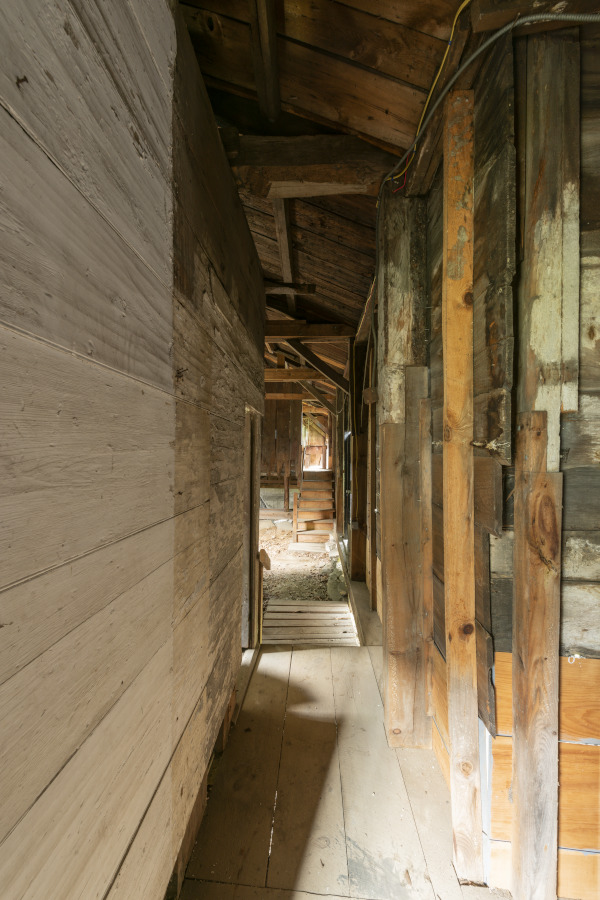
This passageway to the right of the privy originally connected to the barn.
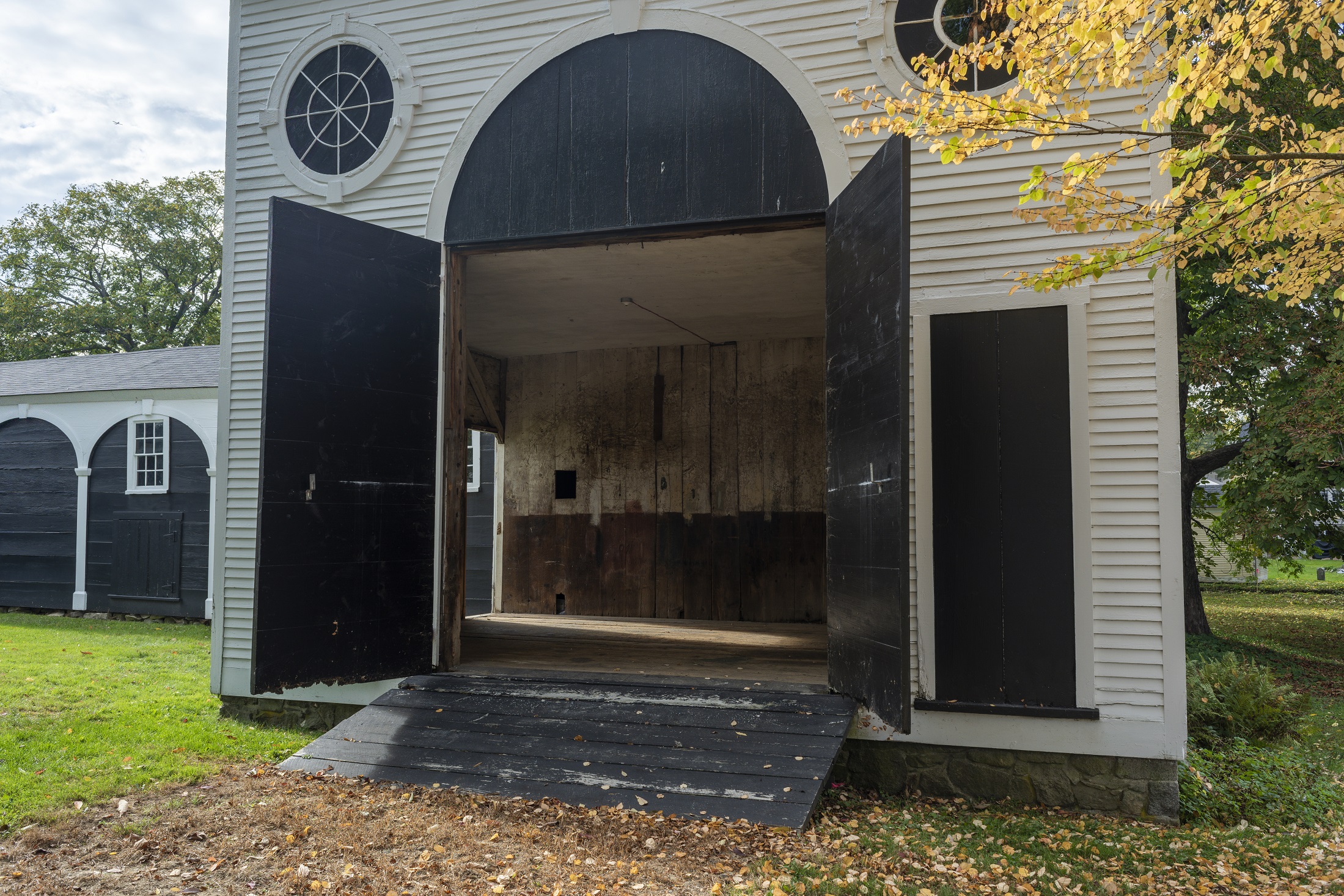
Carriage barn
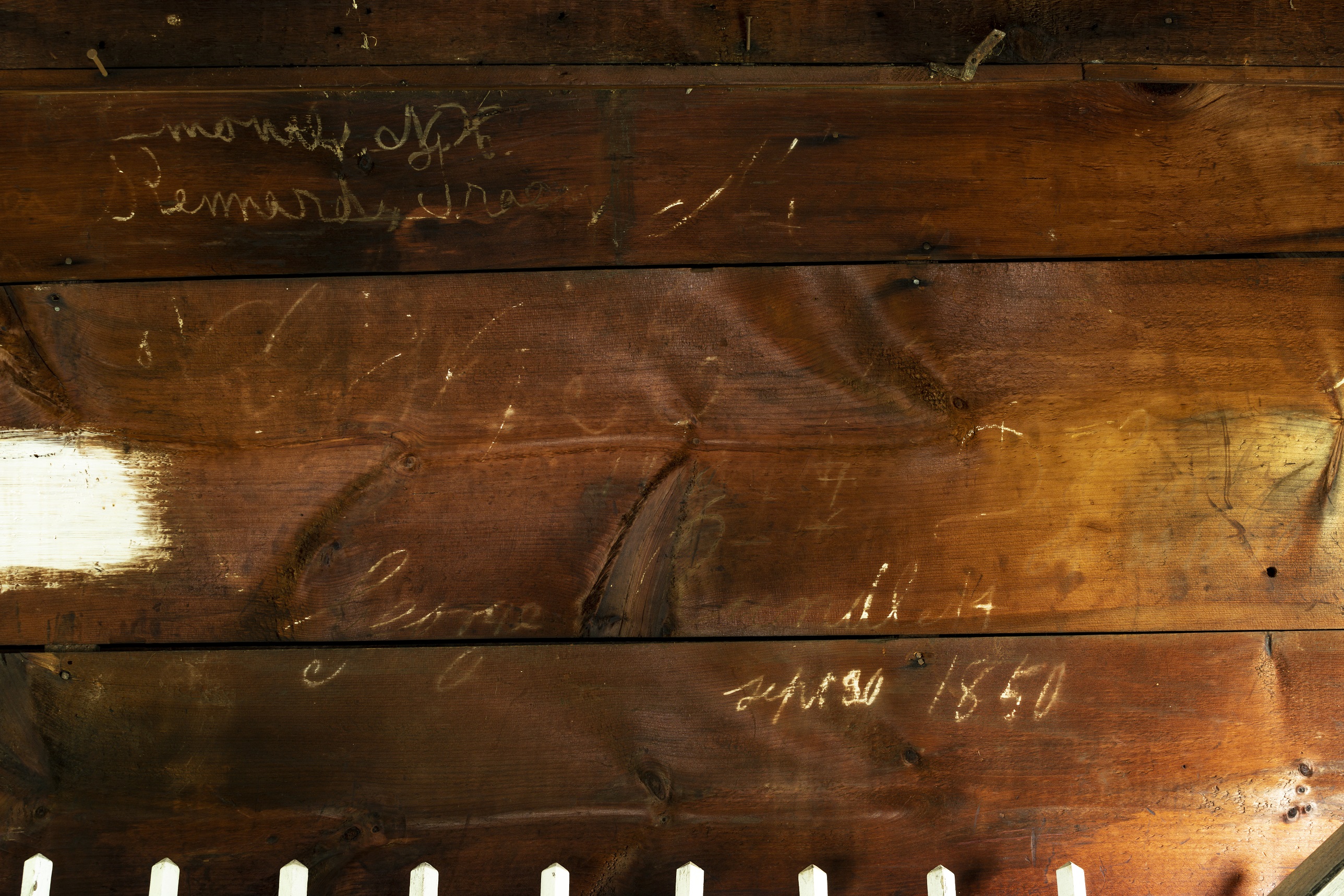
Signed barn wall bearing the name George Rundlet Sept 30 1850.
to learn more
